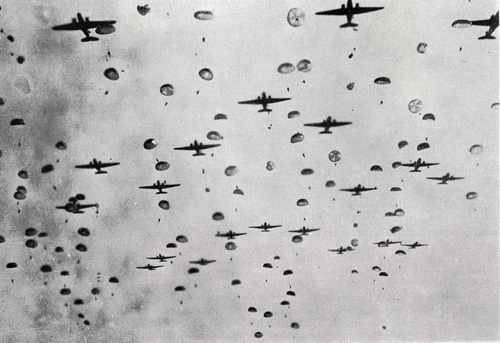before dawn the jump was canceled - General Patton’s Third Army had overrun the objective near Tournai, Belgium.
Planners immediately developed an alternate airborne operations plan for a drop near Liege, Belgium but that jump too was canceled. With many sighs of relief, the 508th PIR returned to Nottingham.
The respite was short. On September 14, the regiment was once again in a marshaling area. By September 16, everyone was ready for the next day's operations.
Briefings indicated that the 508th PIR would parachute into Holland as a participant in Operation MARKET-GARDEN - a British conceived combined airborne and ground offensive.
Market-Garden envisaged armored units racing through Holland, turning west and springing across the Rhine River into Germany. If successful, it would end the war in 1944. It may have worked except for the bridge at Arnheim – the Bridge too far.
Market was the airborne phase of the operation. It required over 5000 fighters, bombers, transports and 2500 gliders. The airborne assault was scheduled for 1330, September 17 - a projected sunny Sunday afternoon.
Garden was the ground phase. It involved tanks and infantry poised on the Dutch-Belgian border. This all-British force was scheduled to attack at 1435 supported by artillery and rocket-firing fighters. The tanks were to attack along highways that paratroopers would hold open for their passage.
As the C-47 planes carrying the 508th PIR neared the Holland coast one could look down and see fighter-bombers searching for antiaircraft guns.
About five minutes before drop time, the C47s began receiving flak and several were hit -- some jump masters ordered the men to "stand up" and "hook up.”

At 1330, as scheduled, Hq1 men were landing south of Nijmegen. German Infantry and antiaircraft guns occupied the drop zone. However, the sight of hundreds of paratroopers descending upon them apparently frightened many of the Germans away from their weapons, and the regiment met with little resistance. | 

